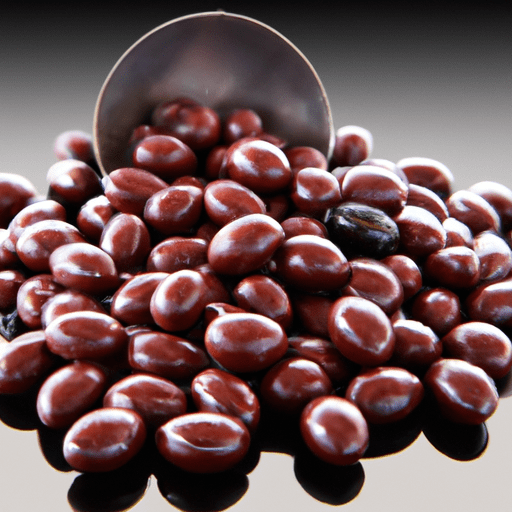The Ultimate Guide to Chocolate Covered Espresso Beans
Chocolate covered espresso beans are a delightful treat that combines the rich, bold flavors of coffee with the indulgent sweetness of chocolate. Whether you’re looking for a quick pick-me-up or a decadent snack, these little gems are sure to satisfy your cravings. In this ultimate guide, we will delve into the world of chocolate covered espresso beans, exploring their taste, uses in cooking, nutritional benefits, and uncovering fascinating history and facts.
Taste and Texture
At first glance, chocolate covered espresso beans may resemble your typical chocolate-covered nuts, but one bite reveals a world of difference. With a delightful crunch, these beans pack a powerful punch of intense coffee flavor. The rich, bitter notes of the espresso pair perfectly with the smooth sweetness of the chocolate coating, creating a harmonious balance of flavors. The combination of textures, with the crunchy bean and the silky chocolate, adds an enjoyable sensory experience to each bite.
Cooking and Culinary Uses
Chocolate covered espresso beans can be enjoyed on their own as a delightful snack. However, their culinary potential extends far beyond that. These little treats can add a unique twist to a wide range of dishes and desserts. Here are a few creative ways to incorporate them into your culinary adventures:
- Baking: Add chopped or crushed chocolate covered espresso beans to brownie or cookie batter for a delightful surprise. The coffee notes will elevate the flavors and provide a pleasant crunch.
- Ice Cream: Sprinkle these beans on top of your favorite ice cream flavor for an added texture and a burst of coffee flavor. They also make a fantastic garnish for ice cream sundaes.
- Trail Mix: Create a custom trail mix by combining chocolate covered espresso beans with dried fruit, nuts, and granola. This combination offers an energy boost and a sweet reward during outdoor adventures.
Nutritional Value
While chocolate covered espresso beans may provide an indulgent treat, they also offer some surprising nutritional benefits. Here are some key aspects of their nutritional profile:
- Antioxidants: Both chocolate and coffee are rich sources of antioxidants, which can help protect your body from damage caused by free radicals.
- Energy Boost: Espresso beans are renowned for their high caffeine content, providing a natural energy boost. However, it’s important to consume them in moderation, as the caffeine levels can vary depending on the brand and the amount consumed.
- Vitamins and Minerals: These beans also contain essential vitamins and minerals like potassium, magnesium, and vitamins B2 and B3.
History and Fun Facts
Believe it or not, the creation of chocolate covered espresso beans traces back to the early 1960s. The story goes that a man named Robert Swenson accidentally discovered this delightful combination. He was experimenting with various ways to preserve the flavor and aroma of roasted coffee beans when he decided to coat them in chocolate. Little did he know that he was about to create a beloved treat that would captivate chocolate and coffee enthusiasts for decades to come.
Here are some fun and interesting facts about chocolate covered espresso beans:
- The coffee beans used for chocolate coating are typically made from Arabica or Robusta beans, known for their intense flavor profiles.
- The first company to mass-produce chocolate covered espresso beans was Marich Confectionery.
- Chocolate covered espresso beans can come in various flavors, such as dark chocolate, milk chocolate, or even white chocolate for those who prefer a milder taste.
- These beans are not only a tasty treat but also a favorite of many espresso enthusiasts who appreciate the combination of coffee and chocolate.
So the next time you’re in need of a little caffeine kick or a decadent treat, reach for a handful of chocolate covered espresso beans. From their bold flavors and versatile uses to their surprising nutritional benefits, these delightful treats are sure to awaken your senses and satisfy your cravings. Enjoy them on their own or get creative in the kitchen to elevate your favorite desserts and dishes. Happy snacking!
Origin: Chocolate-covered espresso beans originated in Italy, where they are known as “confetti al caffè.” Italians have a long-standing tradition of enjoying chocolate-covered coffee beans as a sweet treat and a caffeinated pick-me-up.
Common uses: Chocolate-covered espresso beans are primarily consumed as a snack or a confectionery treat. They are often enjoyed alongside a cup of coffee or used as an energy-boosting snack. Some people also use them as a topping for desserts or even in baking, adding them to cookies, cakes, or brownies for a delightful coffee flavor.
Nutritional benefits: Chocolate-covered espresso beans offer some nutritional benefits. Espresso beans are rich in antioxidants, which can help protect the body against free radicals. Dark chocolate, often used to coat the beans, contains minerals like iron, magnesium, and copper. Additionally, the caffeine content in espresso beans provides a natural energy boost.
Unique properties: Chocolate-covered espresso beans are beloved for their unique combination of the bitter and rich flavors of roasted coffee beans and the sweet and silky taste of chocolate. They provide a convenient and portable way to enjoy the pairing of coffee and chocolate without the need for brewing a cup of coffee. The crunchy texture of the bean contrasts with the smoothness of the chocolate, creating a satisfying snacking experience.
Historical significance: The practice of covering coffee beans with chocolate dates back several decades. In the 20th century, chocolate-covered espresso beans gained popularity as a favorite snack among coffee lovers. Over time, they have become more widely available, with different variations, such as milk or white chocolate coatings. Today, they are appreciated not only for their taste but also as a symbol of the delightful union between coffee and chocolate.




Use the share button below if you liked it.
It makes me smile, when I see it.